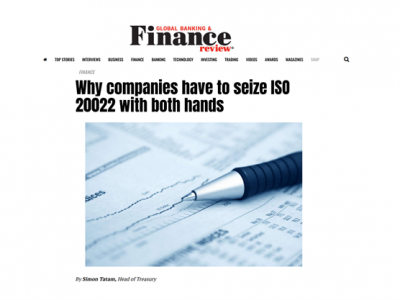Ahead of impending economic and geopolitical headwinds, now is the time to prime your organisation’s Treasury function
By Simon Tatam, Director, Head of Treasury
MHC’s Treasury “Health Check”
The COVID-19 pandemic has reaffirmed the critical importance of the Treasury function and its value to an organisation. As we reflect on the impact of COVID-19, and with further significant economic and geopolitical headwinds emerging, now is the opportune moment for organisations to undertake a quick ‘Health Check’ of their Treasury environment by considering the questions that follow, in order to ensure that it is primed and capable of responding to these challenges.
Cash and Liquidity Management
The primary objective for an organisation in a time of crisis is ensuring a holistic view of its readily available cash and liquidity, and how long it can survive. The overriding consideration is ‘where is my cash and what am I doing with it?’ In developing this thought, there is a subset of associated issues worth reflecting on, such as:
- Cashflow and Liquidity forecasts: what are the organisation’s requirements and obligations out to 180 days? How accurate and/or realistic are the forecasts?
- Have there been any unforeseen challenges because of COVID-19 that need to be factored into forecasts? Are there contingency plans to mitigate these challenges?
- How easy would it be to mobilise or upstream liquidity in a stress event?
- Are there instances of trapped liquidity that need to be addressed? Is there a need to repatriate trapped liquidity from overseas?
- Is there a requirement to have real time visibility and control of intraday liquidity?
- What credit facilities are available? Are they tested and can they be drawn upon in a crisis? Has the provider’s credit appetite changed?
Stress Testing
The impact of COVID-19 means it is likely that existing stress testing assumptions will be viewed through a different lens. Whilst regulated Financial Services firms are required to actively review and evolve their stress testing methodologies, Corporates should also consider ‘getting the drains up’ to understand the drivers of liquidity utilisation and any resulting stresses. Some of the key considerations to contemplate for these purposes are:
- Have any new drivers of liquidity stress been identified?
- Were certain client types/sectors impacted more by COVID-19?
- Have client behaviours been in line with stress testing assumptions?
- How would stress testing assumptions change if there is a second wave or a more severe economic downturn?
- Are Senior Management actively involved and engaged in the stress testing review process?
Governance, Controls and Risk
As alluded to earlier, in a time of crisis, the role of the Treasury function becomes more important. It is vital that the Senior management of an organisation be actively engaged with Treasury to understand the liquidity profile, the risks that exist and what controls and monitoring processes are in place. Effective communication is key; as part of which an effective strategy may account for:
- What outputs/reports are required to give Senior Management visibility and oversight of Treasury activities?
- Is an effective risk management framework being maintained? Are all key risks are known, captured and monitored?
- Is the Treasury function structured in an optimal way to meet challenges as they occur?
- Is there an adequate control framework in place? Have any weaknesses been found during extended periods of remote working?
- Given the current economic environment, does the Treasury strategy deployed need to be reviewed?
Treasury Technology
Technology solutions also play a key role in ensuring that the Treasury function can satisfy the needs of the business for both the present day and future state. Crucially, better technology and automation of processes will enable Treasurers to prioritise and focus on analysis, decision making and strategy in a crisis. Reflecting on the following questions will stand you in good stead to inform your Treasury technology action plan.
- Does the existing technology infrastructure provide easily accessible, relevant, granular data?
- Does the technology give the required level of information and control to quickly track, measure and provide visibility of the organisation’s liquidity profile?
- If there are manual processes or workarounds, have these been documented? Could processes be automated?
- Is there critical data and information being managed on spreadsheets?
Summary
The above questions are just some of the considerations for organisations to address when undertaking a Treasury ‘Health Check’. The objective is to ensure that the function is robust, yet proactive, agile and responsive when challenges arise.
The MHC Treasury value proposition has been built on practitioner-led experience and is ready to assist clients in undertaking a review of their Treasury function. We leverage our collective experience to provide effective solutions in meeting the challenges that clients face.




